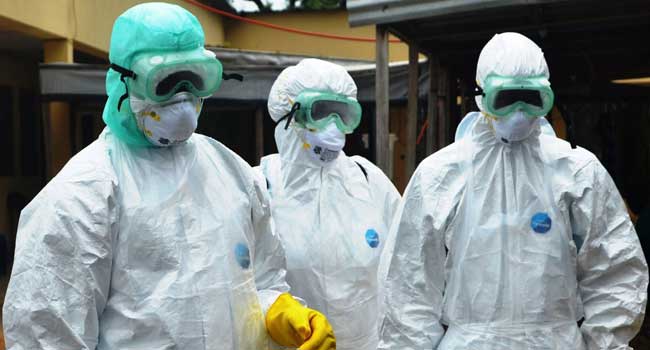Some Ebola survivors may still experience the virus in the deeper compartments of their bodies where the immune system may not be able to clear.
Prof. Jonathan Heeney of Cambridge University, United Kingdom, said this at the 10th Convocation Lecture of the Redeemer’s University in Ede, Osun, on Wednesday.
Heeney, a professor of Veterinary Pathology, spoke on the theme: “Dare To Change: Turning The Tide against Nigeria’s Health Threats.”
Heeney said that the inner compartments of the body where the virus might be noticed include the eyes, the brain, the testes and the joints.
The don said that the virus genomes could be discovered in the semen of 30 per cent of male Ebola survivors six months or longer after they must have recovered from the disease.
He added that it had been documented that suspects could have contracted it from sexual transmission from male survivors or from female to male transmission.
“Breast milk transmission has also been observed, indicating that mother-to-child transmission may also occur from Ebola female survivors.
“Importantly, while an Ebola survivor is healthy, the risk that they may secrete the virus is low and the risk of transmitting the virus casually is negligible, “Heeney said.
The don, however, said that one of the greatest challenges is how to develop a vaccine that would not only protect people against Ebola, but also against its other filovirus family members.
Heeney, however, said that one of the reasons why it was difficult to curb Ebola outbreak in West Africa was because of societal practices.
He said, “Important amongst these factors are tribal cultures, no prior knowledge or experience with Ebola, mistrust of the government, conspiracy theories, among others.’’
According to Heeney, other scientific collaborators and he have started developing a vaccine.
He said that that the vaccine had the potential to protect people from three different kinds of hemorrhagic fever viruses and could be used across Africa.
Heeney said that public health campaigns in the most affected communities should include strategies for keeping rodents out of homes and food supplies and improving personal hygiene. (NAN)

